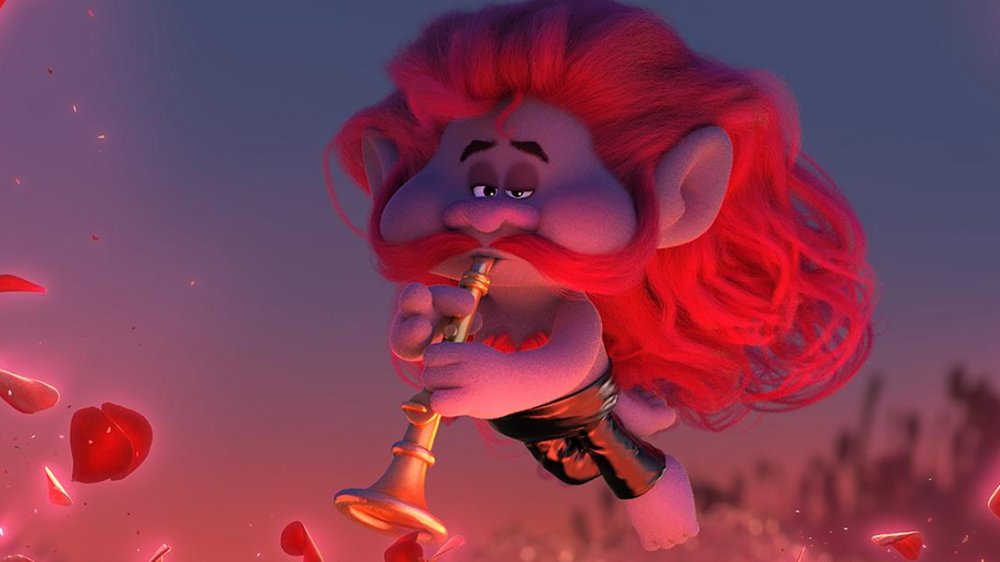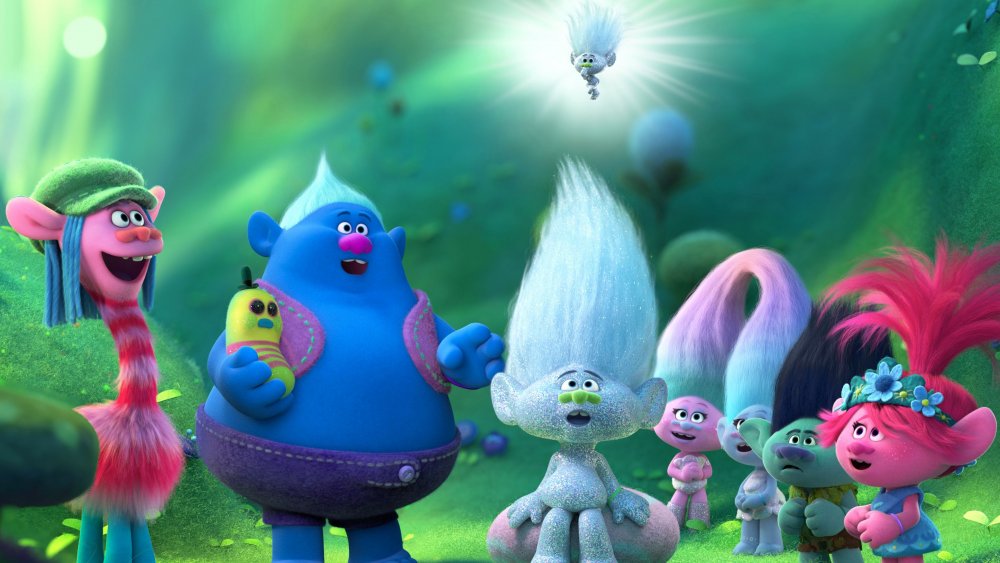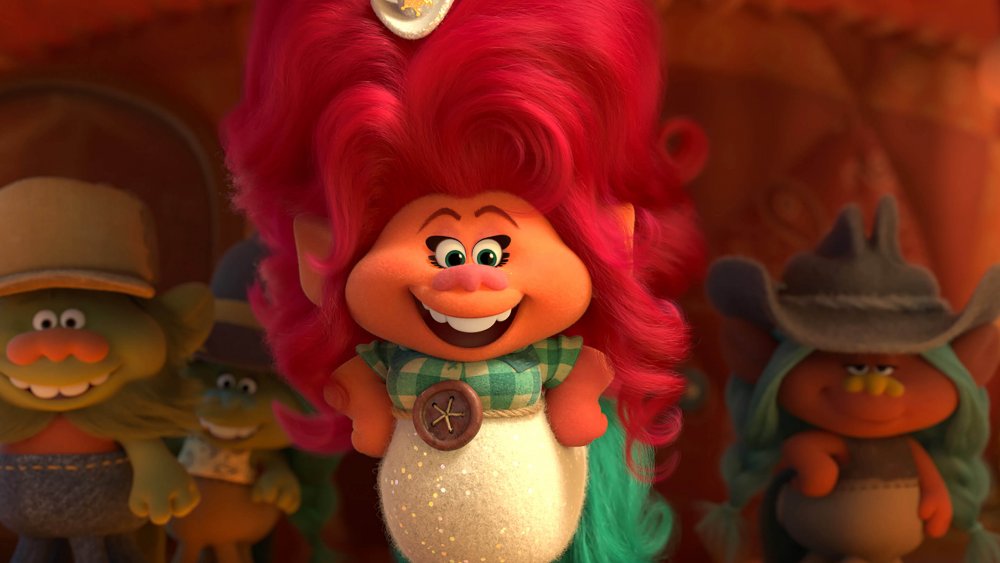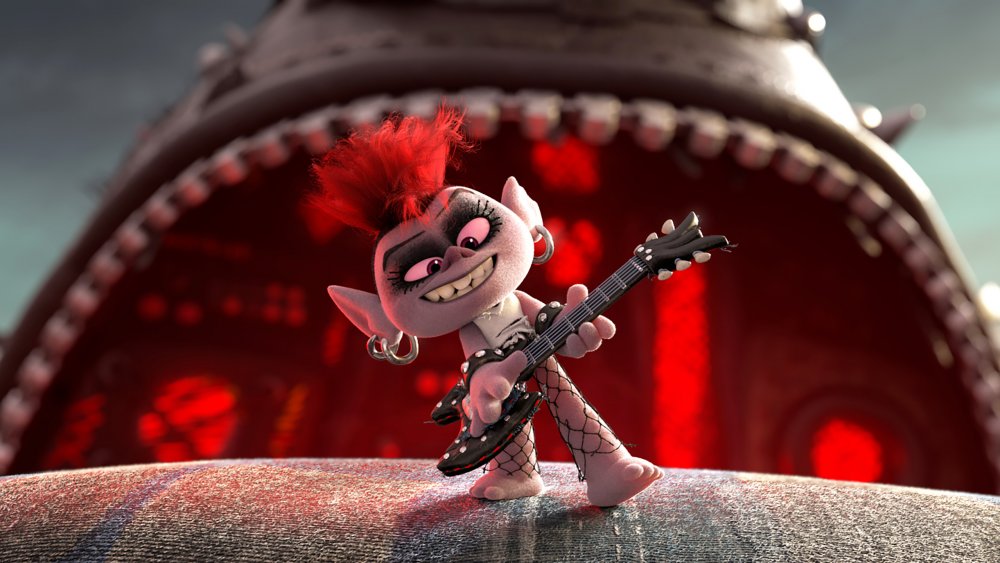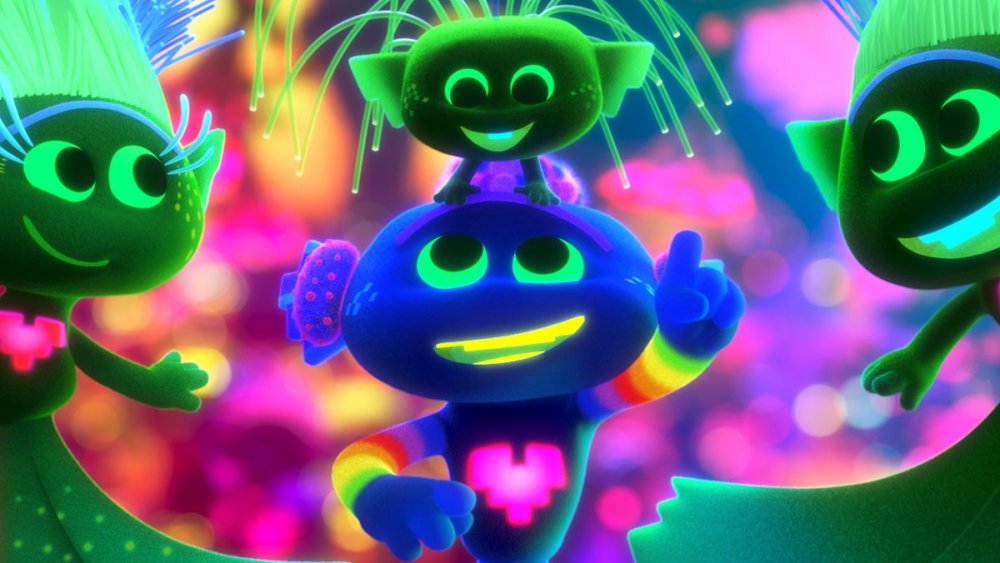Director Walt Dohrn Dishes On Trolls World Tour - Exclusive Interview
There's a war brewing, and Trolls World Tour is right in the middle of it. See, the bright, colorful, musically-oriented kids' film also happens to be the very first — although far from the last — movie released straight to video-on-demand services in lieu of a traditional theatrical release amid the ongoing coronavirus crisis. Universal claims that Trolls World Tour did so well on VOD that it's considering following a similar release model for other movies even after theaters reopen.
Naturally, theater chains weren't pleased and threatened to boycott Universal movies going forward, leading to a standoff that, as of now, still hasn't been resolved, although the furor has subsided a bit. It's a weird situation for a movie like Trolls World Tour to be in, especially considering that director Walt Dohrn really just set out to make a movie that would make everyone happy.
In this exclusive interview, which was conducted after Trolls World Tour's release but before Universal announced its larger VOD plans, Dohrn has plenty to say about Trolls' unconventional release situation, how much thought went into creating the movie's musical world (spoiler: quite a bit), and why Trolls World Tour is the perfect movie to get you through the stay-at-home era.
Director Walt Dohrn's thoughts on Trolls World Tour's straight-to-VOD release
For you, as a director, how did it feel when you learned that Trolls World Tour was skipping its traditional theatrical release and going straight to video on demand?
It was a complex thing, but here is the thing: It was almost like my initial thought was, "This is an opportunity." This is an opportunity to share this movie with even more people that might not go to the theater because of this unprecedented situation.
This thing that we made is pretty much engineered to make you feel good, from the colors, to the comedy, to the music, the production design. It's made to make you feel good. So I went, "Oh, this is an opportunity to share that with everyone who's stuck at home right now." I have two little kids, so I know. It almost felt like an honor. Like, "All right, I get to be a part of helping people feel good." It's a small thing, but it still mattered. So that's where my mind went immediately, as an optimist.
As far as designing the thing, we design it to have that optimum experience [in the theater], but I also know that most people will be, after the theater, experiencing this at home or on their phones, so we're designing it to that as well. In fact, in editorial, when we were cutting the movie we'd have this little monitor that I would look at, which is about the size of a phone, always making sure the stuff read well and that it was designed for all of these experiences.
Had you known how it would be released, would you have done anything differently?
I don't think so. When it comes down to it, even with all of the bells and whistles, which this movie has a lot of, it all comes down to telling this story and having those dynamics between the characters. It doesn't matter which way you view it. You ultimately are having the experience of the jokes and the dynamics between the characters and the thematic elements. Regardless of the platform, that's the experience the audience takes away.
There are some movies that are getting released to video on demand or on streaming services instead of theaters. Some are just getting delayed. Why do you think Trolls World Tour fell in the former category and not the latter one?
In a way, I was relieved. This isn't the exact answer, but there was a certain relief, because I had been working on this myself for four years, three years in production. We were done, man. We were really on schedule on this film, and we were done. So I was just kind of anxious to get it out to the world. I really wanted to share everyone's amazing work on this thing. I didn't want to wait any longer.
As the movies were getting delayed, I felt like, man, the marketplace is already so crowded. It's hard to really to find your position, to get the audience. I was afraid, just personally. I'm like, "Man, if we delay it, not only will it drive me insane because I'm ready to show the movie, but it would have a hard time competing with all those films that are delayed."
I had been doing press for a couple of months around the world, and I felt like there was a momentum and an awareness gaining for the film. And I think it was a good idea to take advantage of that awareness and get the movie in front of people's eyes.
Were you involved directly with the decision to go straight to VOD?
Yeah, Universal was definitely keeping us informed. We would be going to marketing meetings and talking about the plan, and that whole team was amazing. They were really great pivoting because, as you know, every day was different. We were doing a lot of bobbing and weaving and preparing about how we wanted to do this, so they were really great about keeping us informed.
But this franchise, the characters in this world, it's bigger than me, and I acknowledge that. It exists way outside of the story I'm telling in so many ways. They were definitely taking me along on the ride. And I'm happy where it landed, especially now after the weekend. I saw, right, people were watching it. They were ready.
How the Trolls World Tour team decided which musical genres would be represented in the movie
Music plays such a huge role in this movie, but also throughout the history of animation. Why do you think music and animation work so well together?
I've talked about this a little bit, especially during the making of the film, but I'm a huge fan of Fantasia, which goes back to the '40s. We have an homage to that in the film with the classical section of the movie. But yeah, in addition, besides Fantasia, there's also those great films in the '40s. There are Disney-packaged films like Make Mine Music, Melody Time, The Three Caballeros. I love them.
There were a bunch of those, and I think the way animation works, it's music itself. There are so many people in animation industry who are musicians as well. You could say that for cinema in general, but I really think animation is so much about the timing, and I think that's what music is as well.
How did you decide on which genres of music would be represented by each of the Troll kingdoms?
It was a tough one. We actually worked with a musicologist from UCLA that helped us with that, but we had decided on six main genres, mostly because of the device of the guitar, which is kind of the ultimate weapon that the antagonist uses. It had six strings, so I thought, "Okay, there'll be six main genres." But in the end, it's a film about diversity, so we wanted as much representation as we could get. We started squeezing in some other genres like K-pop and reggaeton and smooth jazz and, of course, yodeling. We got hip-hop in there, and some other things too.
But it's only 86 minutes long or something like that. We can only have so much music in the film. What we felt comfortable with, once we worked with the musicologist, is that we felt like the six main genres were a representation of music around the world. I feel like a lot of sub-genres shoot off of those six main genres. But it was a tough one. I mean, music is so complex, how one genre came from another, and there are different truths to it. Everyone has their own story, and on top of it, everyone is so passionate about music and what they like. It was a hard story to tell, and hard to choose those six main ones, but I feel like people were pretty fairly satisfied.
What specifically did you consult with the musicologist about?
This was early on, in the first couple passes at the script, and maybe she was at one of the early screenings. It was a discussion of those genres and the language we used. We talked to her a lot about how one genre led to another. We talked a little bit about cultural appropriation, which is in the film, versus inspiration, because one genre will be inspired by one and grow out of another. This film has that dialogue in it, has a conversation about those ideas. It was nice to have her on board.
The secret behind Trolls World Tours' hand-crafted look
Why go back to Trolls? What did you feel like was left unfinished in the first one that you wanted to address in a sequel?
It was such a great opportunity for all of us at DreamWorks, the whole crew. Here we had this blank slate, almost. At the beginning it's like, "Okay, we get to create all these new characters." They're based on the original Trolls dolls, but there really wasn't anything there. There were no characters, no world, so we got to create that world, create those characters. But we all felt like, "Man, we just scratched the surface on this. There could be such a vast world here that we haven't even seen."
So I think that's what got us excited when we had the opportunity to make another one. It's like, "All right, we get to see so many new characters and get to expand on this world that we built, this kind of fiber-based world. How far can we push that out?"
Can you talk a little bit about how you came up with the world's hand-crafted look, and how you go about designing the environments?
In the first one, with director Mike Mitchell and the production designer, Kendal Cronkhite, we sat down and we talked about not only how do we want this movie to stand out in a marketplace with so many animated movies, but how we also wanted this handmade feel because that's kind of where Mike and my roots are. We studied hand-drawn animation, and he worked with puppets. I still draw with ink on paper. We have roots in that handmade feel, so we go, "How can we express that in film?"
And then, what was great about part two was that our production designer returned, and we saw that the audience really embraced this idea, and they weren't distracted by it. So, we said, "Let's push it out even further." Not only do we use it for humor, but we also wanted to transport the audience to an environment they'd never been before. It was real opportunity to go further than we had in the first film.
What was the biggest technical innovation that your team came up with while you were developing the movie?
There are so many. The team is just insane.
I think there was initially a really big challenge with the top of the movie, which was just how massive the film was. All the new characters, and how different each world was. It was just a huge undertaking. Can we have so many characters? Can we have so many locations? I think it was just a big challenge for them.
One of the more technical things is that the computer has a really hard time with all of the surfacing and the textures in the environments, all that fuzz and fiber. It just takes a long, long time to render that stuff, so they had to write a lot of new programs to be able to render it so well. One of the funny ones, I thought, was they had to teach the computer how to knit and crochet. They had to create a program so the computer understood that. A lot of times the artists would be the equivalent of crocheting within the computer itself, which I think it was so funny. Like, your grandma's hobby, the computer had to learn it.
Why the end of Trolls World Tour is so special
The movie is full of pop culture references, and nods, and Easter eggs. What do you think is the most obscure?
I don't know if this would be an Easter egg so much, but there's one element I really like. People see it on multiple screenings, and it's more of a visual motif. Besides the little kind of prologue that we have, with the cloud guy kind of catching everyone up to speed, the movie opens up with this image of a heart, kind of a 2D heart beating under water, and the sound of a heartbeat.
Well that's a visual motif that really runs through the whole film. If you watch it, every place you go to, there's the symbol of a heart in each sequence. Then, without giving anything away, that's really at the end of the film what saved the day, this idea of the heart and how that works.
And it's also in this, in a movie that celebrates difference, the heartbeat and the heart itself is this idea of a shared commonality. No matter how different we are, and our differences are important to acknowledge, we all have this heartbeat, which acts like a piece of music itself. So, it's kind of fun to have an awareness of that and go through the film and go, "Oh there's the heart there. There's the heart there."
Is there any scene or element of this movie that epitomizes the project to you, or that you're particularly proud of?
Oh, there are so, so many. Really, it's hard to pick your favorites. Maybe I could pick two.
One I really like is the smooth jazz fantasy sequence, which is special to me. It's special to me because it is so odd. The surreal, offbeat humor is something I'm really drawn to, and the psychedelic nature of it. But I also really like it because the team was so incredible and so technically efficient that when Dave and I said, "Okay, we have this sequence, but we want it to look really bad. We want it to look like a bad cable access show. We want stuff off-register. We want you guys to do a bad job," that was so hard for them. The artists at DreamWorks are so good. I was like, "This is what's going to make it funny, guys." So that sequence is special for me. It doesn't really set the tone of the entire film, but it's an element in there that I really liked.
But I think really act three, and I know I'm picking a bigger chunk now, but even if you're watching it at home, we wanted this sense of a concert experience at the end of the film. For me, a lot of third acts in films become these relentless chase sequences. It just happens, and people really like that stuff, but I wanted to avoid that. I wanted to take the audience to a concert at the end of the movie. And I think every element, from the music to the crowds to the production design, everything felt like you are attending a concert at the end of the film. And really, just visually, the team blew us away, and the music was so beautiful. So really the entirety of act three, which is notoriously hard to pin down.
